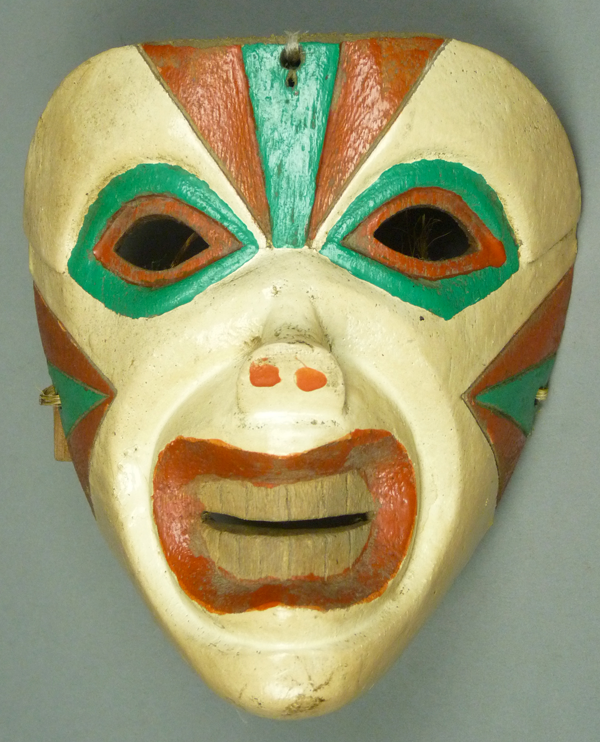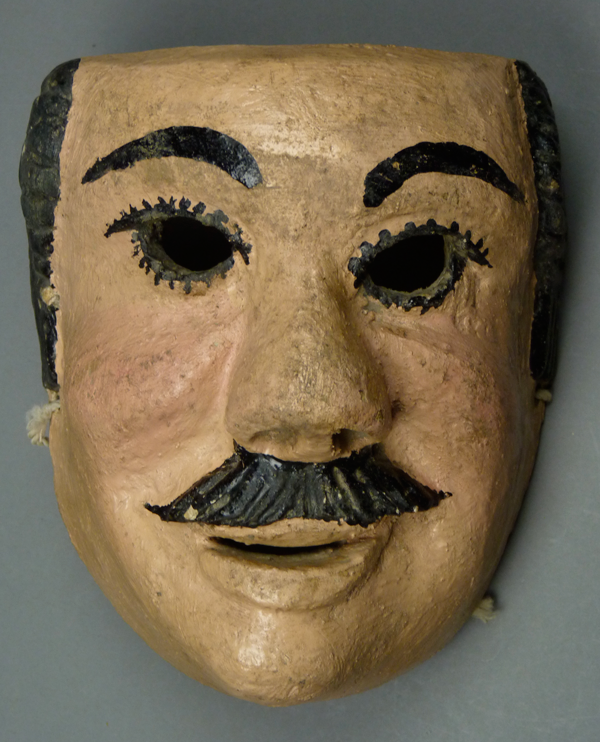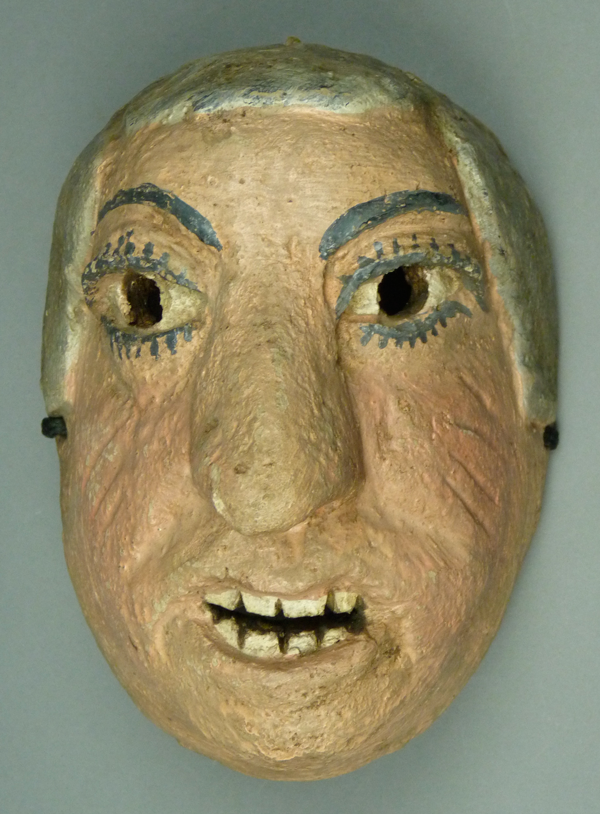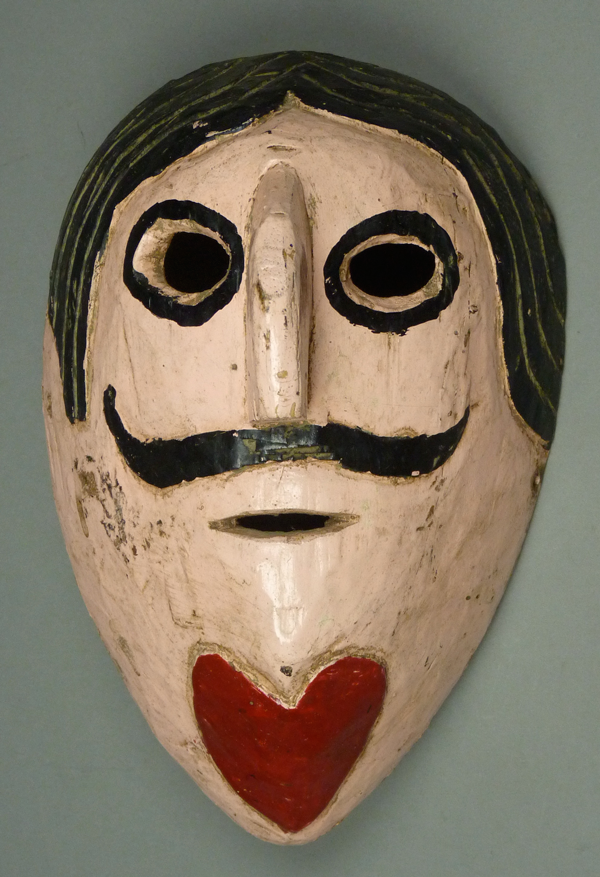In their book Máscaras (1981, pages 86 and 87), Jaled Muyaes and Estela Ogazón wrote of the masks worn in the Danza de los Xantolos—”The masks are of two different types. The so-called primitive masks are characterized by painted features, geometric incisions representing wrinkles and an open mouth displaying teeth and gums. The more elaborate masks are characterized by their anthropomorphic realism and fine workmanship. They are small, disproportionate, some painted and others left unpainted.” Those authors included a photo of one of the geometric masks (Plate 17). Last week’s post featured masks from the “more elaborate” category, while today’s discussion will focus on the “primitive” or geometric masks. There is actually a third category, masks with novel designs, some of which would be described as primitive after all, and probably a fourth that consists of masks borrowed from other dances. Here is one of those geometric masks.
I purchased this Viejo mask and the next from Dinah Gaston in 2002. It is from Huehuetla, Hidalgo.




